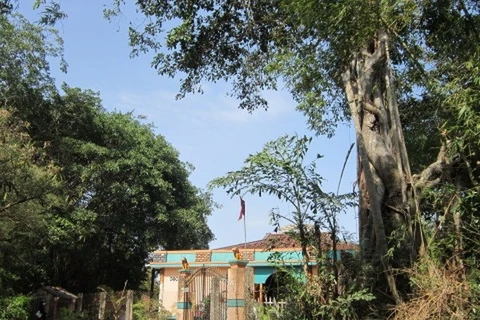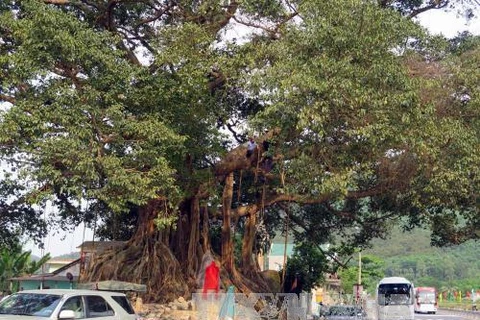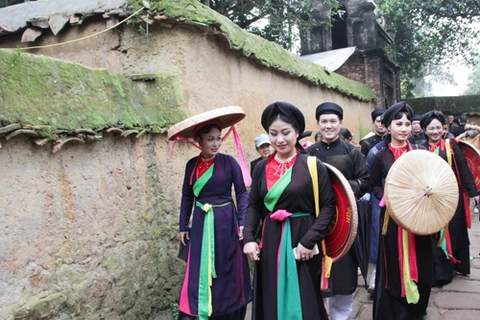Hanoi (VNA) – A conference was held by the Vietnam Association for Conservation of Nature and Environment (VACNE) in Hanoi on April 27 to review public efforts to conserve Vietnam’s heritage trees over the last seven years.
Addressing the event, Prof. Dr Dang Vu Minh, Chairman of the Vietnam Union of Science and Technology Associations, suggested preserving heritage trees in connection with environmental protection, thus creating livelihoods for the community.
The conference heard that a total of 2,700 ancient trees in 52 provinces and cities nationwide have been recognised as heritage trees so far. This showed the great significance of the movement.
Prof. Dr Dang Huy Huynh, Chairman of the Council for Vietnam Heritage Trees, the programme contributes to raising public awareness of protecting heritage trees and calling for public involvement in preserving biodiversity and valuable flora gene sources, and protecting the environment.
In the coming time, the VACNE will work hard to support localities in prolonging the life of recognised heritage trees and other ancient trees, towards improving livelihoods for the community, he said.
In 2011, the VACNE launched a programme to conserve Vietnam’s Heritage Trees, aiming to select and honour significant trees in a bid to conserve their gene sources, while raising public awareness of protecting the environment.
It also contributes to promoting the diversification and abundance of Vietnam’s flora as well as developing scientific research in the field.
To win the honour, the trees must be at least 200 years old in the case of wild trees, and at least 100 years for those planted. Moreover, the trees should be connected with the historical and cultural characteristics of the area where they grow.
Those which do not meet the criteria, yet have special value to science, history or culture, will also earn recognition.-VNA
Addressing the event, Prof. Dr Dang Vu Minh, Chairman of the Vietnam Union of Science and Technology Associations, suggested preserving heritage trees in connection with environmental protection, thus creating livelihoods for the community.
The conference heard that a total of 2,700 ancient trees in 52 provinces and cities nationwide have been recognised as heritage trees so far. This showed the great significance of the movement.
Prof. Dr Dang Huy Huynh, Chairman of the Council for Vietnam Heritage Trees, the programme contributes to raising public awareness of protecting heritage trees and calling for public involvement in preserving biodiversity and valuable flora gene sources, and protecting the environment.
In the coming time, the VACNE will work hard to support localities in prolonging the life of recognised heritage trees and other ancient trees, towards improving livelihoods for the community, he said.
In 2011, the VACNE launched a programme to conserve Vietnam’s Heritage Trees, aiming to select and honour significant trees in a bid to conserve their gene sources, while raising public awareness of protecting the environment.
It also contributes to promoting the diversification and abundance of Vietnam’s flora as well as developing scientific research in the field.
To win the honour, the trees must be at least 200 years old in the case of wild trees, and at least 100 years for those planted. Moreover, the trees should be connected with the historical and cultural characteristics of the area where they grow.
Those which do not meet the criteria, yet have special value to science, history or culture, will also earn recognition.-VNA
VNA

























